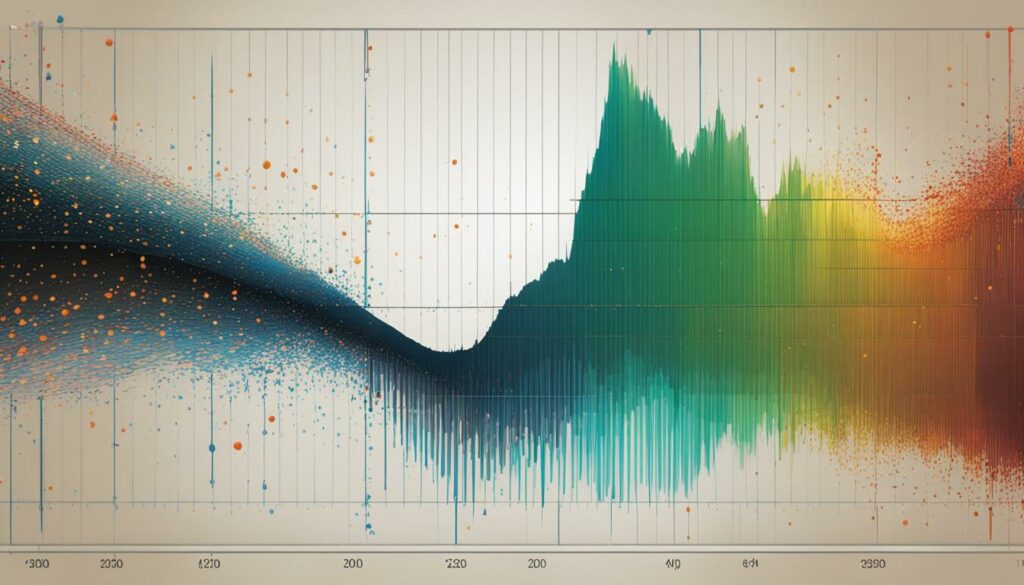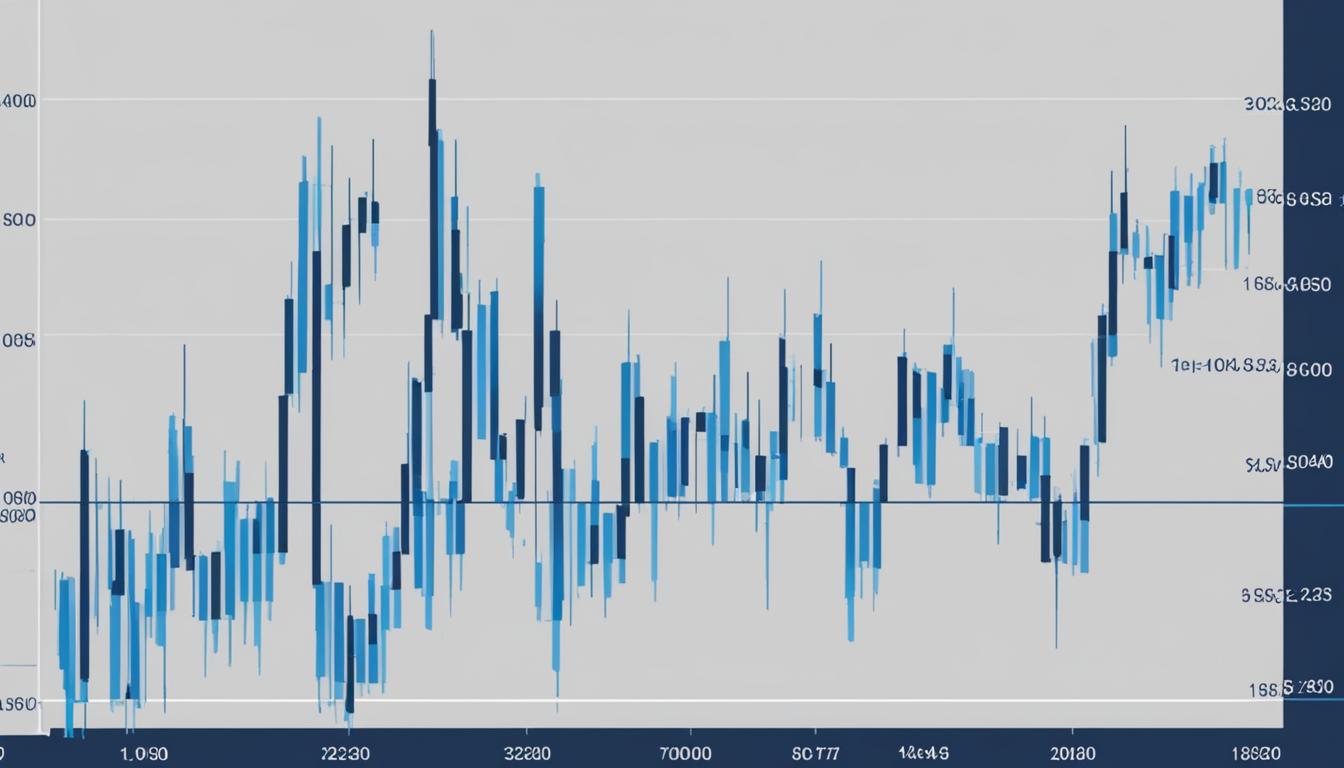The Role of Greek Letters in Finance

Greek letters are not just a part of the Greek alphabet, but also a crucial element in the world of finance. These letters are used to measure different factors that impact financial instruments and models. Understanding these Greek letters is essential for anyone who wants to make informed decisions in finance and investing.
Key Takeaways:
- Greek symbols, such as delta, theta, gamma, vega, and rho, are used to assess risk and manage option portfolios in finance.
- The Greeks represent different risk characteristics and are calculated using mathematical models.
- Understanding the Greeks is essential for options traders and portfolio managers to evaluate the behavior of their options investments.
- By analyzing the Greeks, traders can make informed decisions to hedge their positions and manage their risk effectively.
Greek Letters in Finance: An Overview
Greek letters play a pivotal role in finance by quantifying risk and facilitating options pricing. They offer valuable insights into an option’s sensitivity to various factors, essential for accurate options pricing and risk management. Traders rely on these letters to make informed decisions, with delta, gamma, theta, vega, and rho being particularly crucial. These Greek letters hold significance in assessing the value of the option, its delta changes concerning the underlying asset, and its pricing model. The positive and negative deltas, along with high gamma, are among the various risk factors they help analyze, impacting trading options and the price of the underlying stock. Understanding these NLP terms offers a deeper comprehension of option pricing and risk management in finance, benefiting both option buyers and sellers.
Importance of Greek Letters in Financial Models
The use of Greek letters in financial models is indispensable for pricing and risk management of options. These letters enable traders to evaluate the impact of various factors on option pricing, enhancing the accuracy and depth of financial models. Moreover, they serve as key indicators of an option’s sensitivity to price changes, providing valuable insights for predicting and managing market risks effectively. Financial models heavily rely on the value of the option, underlying assets, expiration dates, and delta changes to compute the price of the option and gauge its sensitivity to underlying price movements. Understanding the nuances of these NLP terms is crucial for option pricing models, making them essential for informed decision-making in trading options and managing risk factors. Employing these NLP terms ensures the accurate assessment of the intrinsic value and risk factors associated with trading options, ultimately contributing to an expert and trustworthy approach in financial modeling.

Beyond Option Greeks: Other Applications
Greek letters in finance extend far beyond options trading, playing a critical role in influencing risk management strategies and decision-making processes. These letters have widespread applications in portfolio management and asset pricing models, providing valuable insights for hedging and investment strategies. Their significance lies in enabling a comprehensive understanding of market dynamics and facilitating well-informed choices in the financial landscape, beyond just options. Furthermore, their application is evident in various financial derivatives, emphasizing their versatility and importance in the broader financial domain. Incorporating these Greek letters into risk management processes and investment strategies is crucial for comprehensively addressing and navigating the complex landscape of financial markets.
“The Greeks are essential tools for options traders and portfolio managers. Understanding and interpreting these symbols provide valuable insights into options’ behavior and risks.”
| Greek | Sensitivity |
|---|---|
| Theta | Sensitivity to changes in the price of the underlying asset |
| Delta | Sensitivity to changes in the underlying asset’s price |
| Gamma | Rate of change in delta for every one-point increase in the underlying asset |
| Vega | Sensitivity to changes in the implied volatility of the underlying asset |
Using the Greeks to Manage Risk
The Greeks, or risk indicators derived from options pricing models, play a vital role in risk management for options traders and portfolio managers in the world of finance. Understanding the Greeks allows traders to assess the risk exposures associated with their options positions and make informed decisions to manage their options risk effectively.
One way the Greeks can be used in risk management is by creating delta-neutral positions. Delta measures the rate of change between an option’s price and a $1 change in the underlying asset’s price. By balancing out the delta of the options portfolio, traders can minimize directional risk and create a more neutral position.
“Delta measures the rate of change between an option’s price and a $1 change in the underlying asset’s price.”
Another important Greek for risk management is gamma. Gamma represents the rate of change between an option’s delta and the underlying asset’s price. By understanding how stable an option’s delta is, traders can hedge against changes in the price of the underlying asset and mitigate risk.
“Gamma represents the rate of change between an option’s delta and the underlying asset’s price.”
Theta is yet another Greek that can aid in risk management. Theta measures the rate of change between an option’s price and time. By evaluating the time decay and potential loss in value of their options over time, traders can make adjustments to their portfolios and manage risk accordingly.
Vega, the last Greek in our risk management arsenal, measures the rate of change between an option’s value and the underlying asset’s implied volatility. By understanding how changes in volatility can impact option prices, traders can manage the impact of volatility changes and protect their positions.
“Vega represents the rate of change between an option’s value and the underlying asset’s implied volatility.”
By monitoring and analyzing the Greeks, traders can effectively assess their options risk exposure and make informed decisions to manage their portfolios. Now let’s see a table summarizing the key Greek indicators and their applications in options risk management.

| Greek | Description | Application in Risk Management |
|---|---|---|
| Delta | Measures the rate of change between an option’s price and a $1 change in the underlying asset’s price. | Creating delta-neutral positions to minimize directional risk. |
| Gamma | Represents the rate of change between an option’s delta and the underlying asset’s price. | Hedging against changes in the price of the underlying asset. |
| Theta | Measures the rate of change between an option’s price and time. | Evaluating time decay and potential loss in value of options over time. |
| Vega | Represents the rate of change between an option’s value and the underlying asset’s implied volatility. | Managing the impact of volatility changes on option prices. |
Finding Values for the Greeks
When it comes to evaluating options in the financial market, understanding the option Greeks is essential. However, it is important to note that the values for the Greeks are not tangible; they are theoretical and calculated based on mathematical models.
Calculating the Greeks manually can be a time-consuming process, especially when dealing with a large number of options. That’s where retail brokerages and computerized solutions come into play. These tools can provide accurate calculations of the Greeks, making it easier for traders and portfolio managers to assess the risk characteristics of their options positions.
The Greek values are generated using factual data, such as bid, ask, and last prices, volume, open interest, and other market information. These inputs help in accurately estimating the Greeks for options, allowing traders to make informed decisions about their investments.
To illustrate the importance of accurate calculations, consider the example below:
Let’s say you are considering two different options with varying risk profiles. By calculating the Greeks for each option, you can compare their sensitivities to changes in the underlying asset, time, and volatility. This analysis can help you determine the risk-reward trade-off and decide which option aligns better with your investment goals.
Advantages of Computerized Solutions
While manual calculations are possible, using computerized solutions offers several advantages:
- Efficiency: Computerized solutions can handle the complex calculations involved in determining the Greeks for a large number of options, saving traders valuable time.
- Accuracy: Retail brokerages and computerized solutions utilize sophisticated models and factual market data to ensure accurate calculations of the Greeks.
- Real-time Updates: These tools provide real-time data, allowing traders to stay up to date with the changing market conditions and make timely decisions.
By leveraging computerized solutions, traders can streamline their options analysis process, enabling them to focus on other aspects of portfolio management and strategy development.
Ultimately, finding values for the Greeks is crucial for effective options risk management. With accurate calculations in hand, traders can confidently assess the risk exposures associated with their options positions and make informed decisions to optimize their portfolios.

Using the Greeks in Combination Trades
The Greeks, such as delta, gamma, theta, vega, and rho, are not only essential for evaluating individual options, but they also play a crucial role in analyzing combination trades that involve multiple options. By understanding the Greeks of each individual option and how they interact within a combination trade, traders can assess the risk exposures and potential rewards of complex strategies.
When constructing combination trades, the Greeks can help quantify the various risks involved and assist in creating hedged positions that minimize overall risk. By monitoring and managing the Greeks, traders can optimize their option strategies and make informed decisions to maximize their returns.
For example, let’s say a trader wants to execute a combination trade involving a long call and a short put. By analyzing the Greeks, the trader can determine the delta, gamma, theta, vega, and rho values of each option, as well as how they interact with each other. This analysis allows the trader to assess the risk exposure and potential profitability of the trade.
Overall, the use of the Greeks in combination trades provides traders with valuable insights and tools to effectively manage their options strategies. By understanding the risk characteristics and potential rewards associated with different options positions, traders can make informed decisions while optimizing their returns.
How does Knowledge of Greek Letters Enhance Financial Literacy?
Understanding the intricacies of option greeks enhances financial literacy. These greeks, such as delta, gamma, and vega, enable accurate pricing and risk management. They provide insights into an option’s sensitivity to various factors and help develop successful trading strategies. Knowledge of these greeks establishes a deeper understanding of the relationship between option prices and underlying factors.
Conclusion
In conclusion, understanding the role of Greek letters in finance is crucial for making informed financial decisions. Greek letters, such as Delta, Gamma, Theta, Vega, and Rho, play a significant role in financial models and options contracts. They help investors assess risk, predict market volatility, and make strategic investment decisions. Additionally, knowledge of minor Greeks like Lambda and Vomma can enhance financial literacy and provide a deeper understanding of complex financial concepts. By familiarizing yourself with these Greek letters, you can become a more knowledgeable and savvy investor. Stay informed, stay ahead, and make the most out of your financial endeavors.







